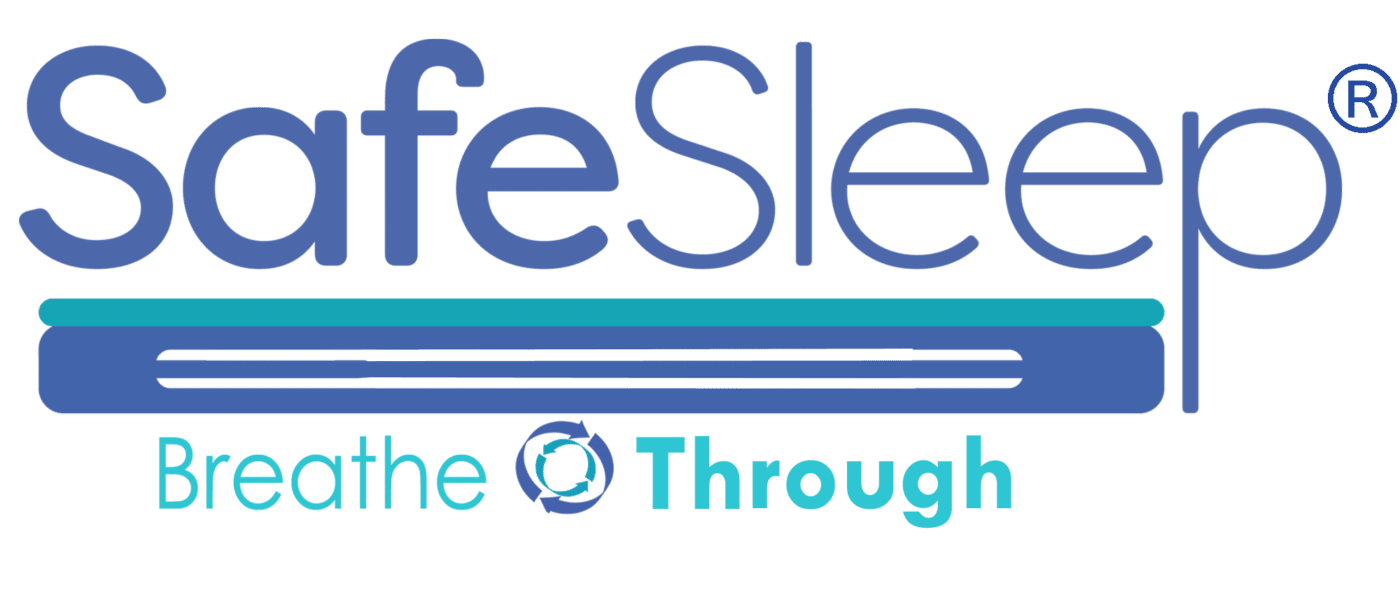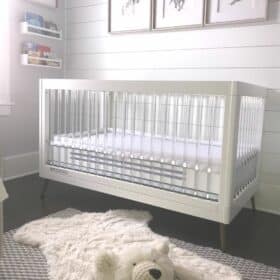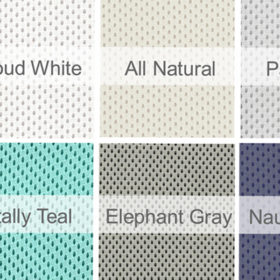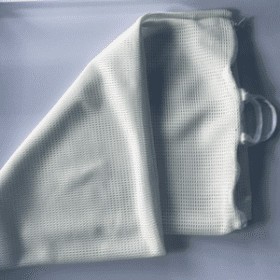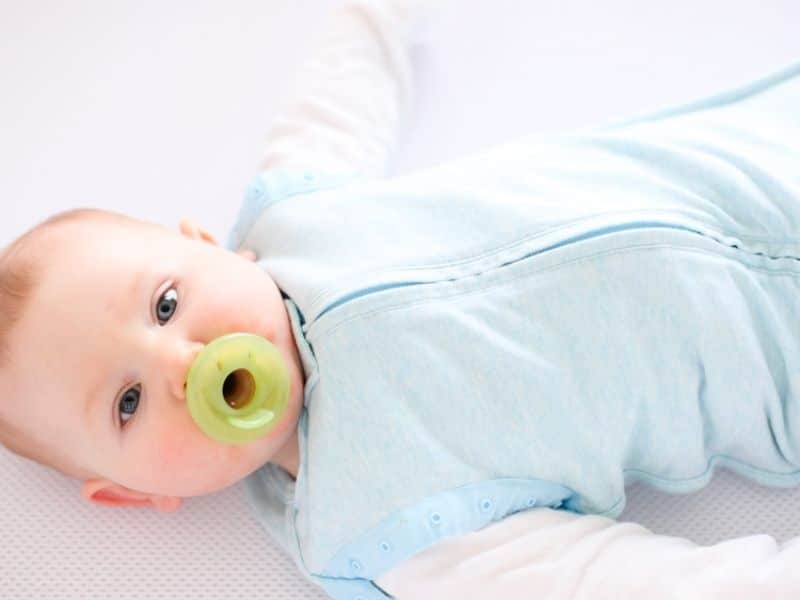No products in the cart.
Crib Mattress Facts
Baby Crib Mattress and SIDS
A baby crib mattress can cause an infant to rebreathe harmful carbon dioxide should they roll over.
Cases continue to be reported of infants placed on their back and found on their tummy on firm crib mattresses. These deaths are thought to be the caused by rebreathing. Rebreathing is when an infant continues to rebreathe their exhaled air that becomes trapped in their mattress Carbon dioxide can also become trapped in the folds of sheets. Other incidences have been reported of infants who become entangled and suffocate in their crib sheets.
In fact, there are over 3,500 sleep-related deaths among U.S. babies each year, according to the CDC.
Baby Crib Mattress and SIDS – The Science
“The first few times babies who usually sleep on their backs or sides shift to the prone (lying face down) position, they have a 19-fold increased risk of sudden death,” says senior author Bradley T. Thach, M.D. Thatch is a pediatrician at St. Louis Children’s Hospital.
According to Thatch, “We wondered if these babies, finding themselves face down, fail to turn their heads to breathe easier. If so, is that because their reflexes haven’t developed far enough or because they just don’t wake up?”
Further, the findings indicate that good head-lifting ability while lying prone may not be sufficient to protect a baby from SIDS. “Many parents think if a baby can lift its head, he or she is okay to sleep prone. This is a false assurance,” Thach says (Paluszynska 2004)
Find out more about the science behind crib mattress safety.
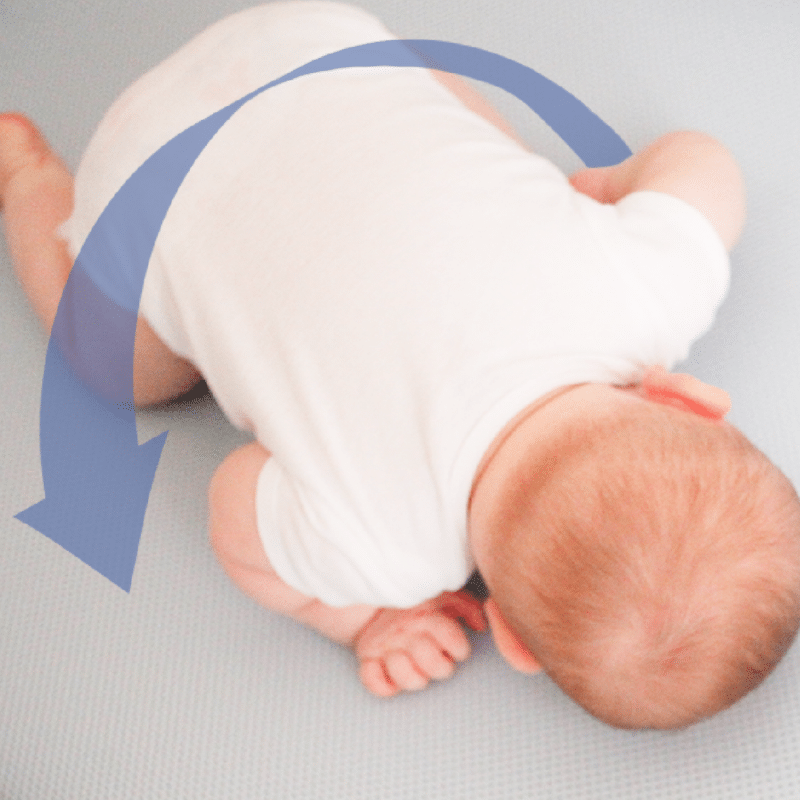
Studying 38 Healthy Infants
Thach and his colleagues study 38 healthy infants aged 3 to 37 weeks. Half of the babies usually slept prone or had a history of turning prone during sleep. The other babies had never slept prone. The study appears in the December 2004 issue of the Journal of Pediatrics.
The researchers construct a moderately asphyxiating surface, a comforter placed over a foam rubber baby crib mattress with a two-inch deep circular depression that lies directly beneath the baby’s face. When babies are sleeping face down on the surface, they “rebreath” air they have exhaled. This air can have high amounts of carbon dioxide. A catheter is taped beneath the babies’ noses allowing for monitoring of carbon dioxide levels.
The Results
After four to five minutes of sleeping face down on the surface, all 38 babies in the study awake and attempt to get fresher air. The babies with experience sleeping on their stomach generally lift and turn their heads to either side when they sense the air is stale. Consequently, increasing their supply of oxygen-rich air.
In contrast, the inexperienced infants generally nuzzle the bedding or briefly lift their heads. They then resume sleeping face down. Overall, babies inexperienced with sleeping on their stomach spend more time fully face down than their more experienced counterparts.
Nuzzling
Nuzzling produces only a transient lowering of carbon dioxide levels at the nose. Complete head turns produce larger, sustained decreases in carbon dioxide. Head lifts also reduce carbon dioxide levels. However, the decrease lasts only as long as the baby’s head is raised.
Insufficiently Learned Airway Protective Responses
The researchers suggest, babies learn through experience, which head movements decrease the discomfort associated with breathing high carbon dioxide levels. Therefore, babies with experience sleeping prone are better able to avoid conditions that may trigger SIDS. The research results support the hypothesis, advanced by others – SIDS may result from insufficiently learned airway protective responses.
Crib Mattresses and Carbon Dioxide
This and other test data raise concern that baby crib mattresses with fiber fill trap carbon dioxide. Carbon dioxide is heavier than air, so it rests in the mattress core or fill. It has no way to escape.
The findings also indicate good head-lifting ability while lying prone may not be sufficient to protect a baby from SIDS. “Many parents think if a baby can lift its head, he or she is okay to sleep prone. Unfortunately, this is a false assurance,” Thach says. “Parents and other caregivers should never place an infant in the prone position until he or she shows the ability to spontaneously turn all the way over. Back-sleeping should continue to be strongly encouraged to protect against SIDS.”
Dangers of Baby Sleeping in the Prone Position
Research on infants who are novice at prone sleep demonstrates they are less likely to respond effectively to CO2 accumulation. This makes them especially vulnerable (Paluszynska 2004). Researchers out of New Zealand shows over one quarter of infants who die of SIDS in the prone position on a baby crib mattress are last placed non-prone (on their back).
Unintended Consequence of the Successful Back-to-Sleep Campaign
Researchers suggest an infant’s competence in escaping from potentially lethal situations during prone sleep may be impaired by inexperience in prone sleeping (Thatch1999). Their findings are later supported by Dr. Moon and colleagues in their review of infant sleep related deaths in child care settings (Moon 2000). Unfortunately, infant inexperience in prone sleep is now a common unintended consequence of the successful back-to-sleep campaign.
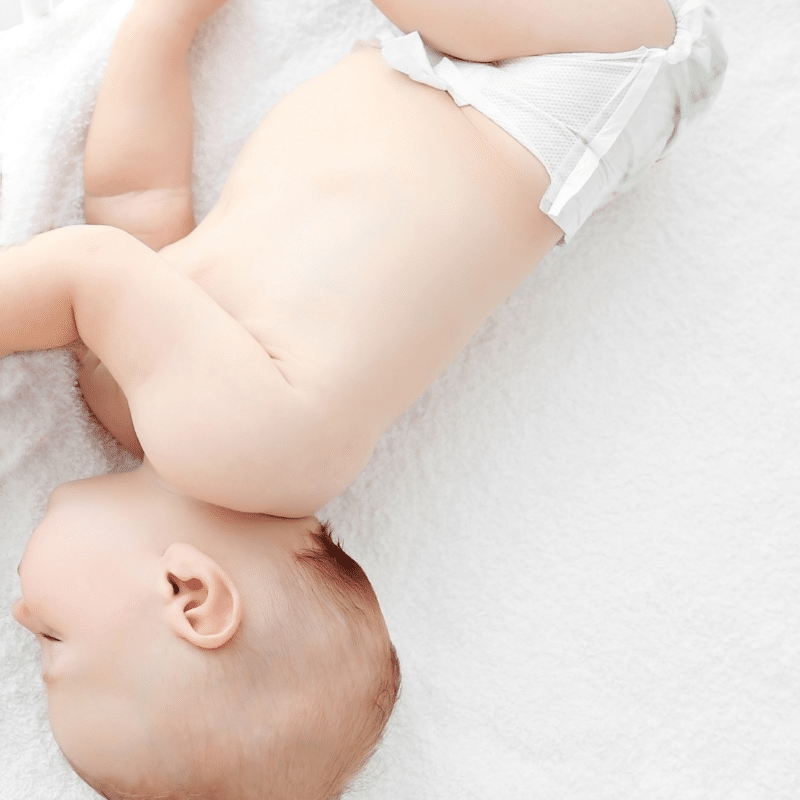
Babies who never sleep on their stomachs don’t learn behaviors that may lessen their risk of SIDS, according to researchers at Washington University School of Medicine in St. Louis. Even so, the researchers caution that infants should always be placed on their backs to sleep.
Baby Crib Mattresses and SIDS – The Introduction of Air Permeable and Breathable Crib Mattresses
An air permeable baby crib mattresses is the best defense for a baby rolling over in the middle of the night, and ends up sleeping face down. This is the most successful approach to preventing the tragedies we see relating to baby crib mattresses and SID; suffocation, rebreathing, and overheating.
A breathe-through crib mattress is designed to prevent the accidental suffocation and rebreathing of harmful levels of carbon dioxide. It protects a baby should they roll in the middle of the night.
Baby Crib Mattresses and SIDS – Published Relevant Scientific Case Controlled Studies Supporting the Recommended Use of Air Permeable Crib Mattresses:
Dr. James Kemp and colleagues are some of the first to study the potential for various crib mattresses and sleep surfaces to prevent rebreathing.
They find the firm crib mattress and four of the five surfaces designed to prevent rebreathing consistently allow lethal rebreathing of CO2. Only one product—an air permeable crib mattress—is able to maintain CO2 levels below this threshold.
The authors go on to say that “even a firm fiberfill crib mattress poses a rebreathing threat when vulnerable infants sleep prone.”
SIDS and The Novice Tummy Sleeper
Studies show unaccustomed prone sleepers, including infants who are placed supine and roll prone have an increased risk of SIDS (O’Hoir 1998 and Mitchell EA 1999). These studies and others show nearly half of SIDS victims unaccustomed to prone sleep, are discovered in the face-straight-down position.
Many of these infants are found on a firm baby crib mattress. Dr. Kemp’s data supports if vulnerable infants are placed on an air permeable surface, they experience far less risk of rebreathing should they inadvertently roll prone.
Find out more about the safest and best crib mattress for tummy sleepers.
Breathe-Through Crib Mattress Crib Mattress Design and Testing
In 2011, Dr Ephraim Bar-Yishay and colleagues provide the second study on CO2 accumulation and rebreathing on six baby crib mattresses. — The six mattresses include two conventional firm crib mattresses and three mattresses with an additional layer or topper designed to improve air flow. And a crib mattress that has no fiberfill or core materials (Bar-Yishay 2011).
The breathe-through crib mattress is significantly faster at eliminating CO2. In fact, the breathe-through mattress prevents CO2 accumulation with maximal CO2 levels significantly lower than he other five mattresses. Testing concludes the breathe-through crib mattress exhibits significantly better aeration properties compared to the other five baby crib mattresses
A Breathe-Through Crib Mattress
A representative of SafeSleep®, a U.S. manufacturer of a breathe-through baby crib mattress, contacted the CPSC for recommendations on an accredited independent lab to conduct similar tests on aeration properties on their product. Intertek is selected since they use a similar mechanical model and methods as designed by Dr. Kemp.
The lab compares CO2 elimination on four different surfaces—The SafeSleep® air permeable crib mattress, a firm mattress with tight fitting sheet, sheepskin, and a bean bag chair. The latter two are known high risk hazards for rebreathing (Kemp 1991, Kemp 1993). Sheepskin and bean bag chairs are implicated in a significant number of SIDS fatalities.
Significantly Less CO2 Retention
Just as in the studies by Kemp and Bar-Yishay. The SafeSleep® shows significantly less CO2 retention than the firm crib mattress and the high hazard comparators.
Intertek concludes the breathe-through crib mattress by SafeSleep® represents a significantly lower risk hazard for rebreathing than the firm fiberfill crib mattress.
Air Permeability Testing
Intertek also compares air permeability of the SafeSleep® breathe-through crib mattress to a firm crib mattress. ASTM-D737-04 standard test method of air permeability of textiles is used.
Based on the test data, the SafeSleep® air permeable crib mattress has an air permeability rate over 330 times greater than the firm fiberfill baby crib mattress.
Check out our Ultimate Guide to Choosing the Best Crib Mattress.
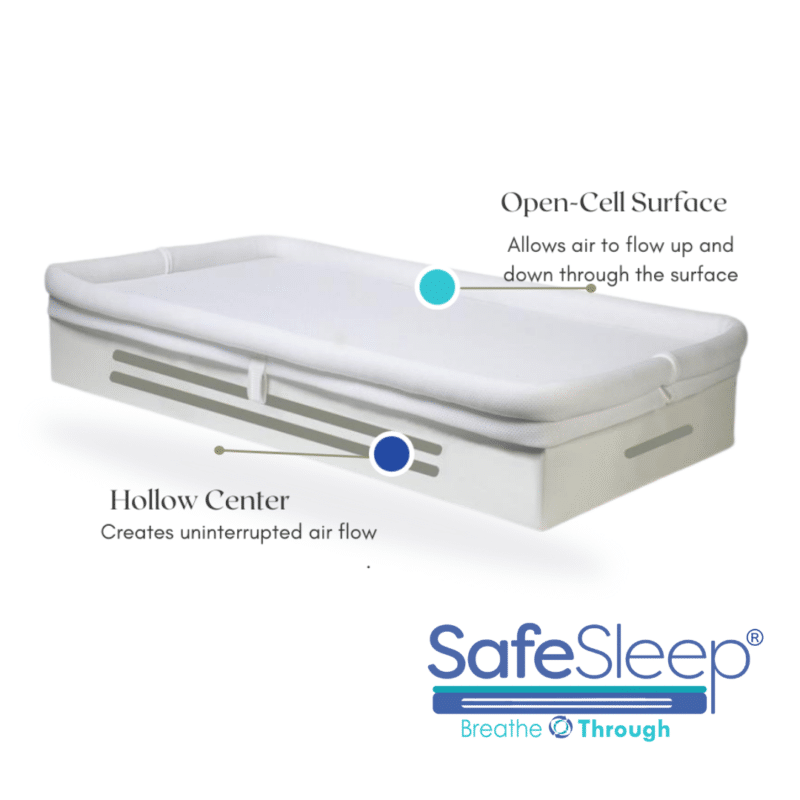
These two well-designed, well-conducted case controlled studies along with the independent CPSC testing lab results strongly support a recommendation for the use of air permeable/breathe-through crib mattresses.
CO2 Retention in Baby Mattresses and The Risk of Rebreathing
The studies outlined above clearly demonstrate the risk of rebreathing of exhaled air (CO2) is lowest on air permeable surfaces (Kemp 2000, Bar-Yishay 2011). The data concludes the SafeSleep® breathe-through baby crib mattress has significantly lower CO2 retention.
All three studies use similar test methods and have similar results.
Direct Prevention of SIDS and CO2 Hypothesis by AAP
While the studies do not demonstrate a direct prevention of SIDS or suffocation, they rely on the hypothesis of rebreathing of CO2. CO2 is long believed to be the contributor to unexpected infant deaths.
A basic pathophysiological principle is the hypothesis that rebreathing C02 is associated with ALTE/SIDS/asphyxia.
Recommendations from AAP Safe Sleep Task Force
Indeed no studies have substantiated this hypothesis; however, this is the same hypothesis used by the AAP Task Force to support the majority of their recommendations including the following with quotes taken from the AAP Task Force report (AAP 2011):
1. Supine sleep position: “The prone or side sleep position can increase the risk of rebreathing expired gases, resulting in hypercapnia and hypoxia.”
2. Room-Sharing Without Bed-Sharing Is Recommended: “Bed-sharing might increase the risk of overheating, rebreathing or airway obstruction, head covering, and exposure to tobacco smoke, which are all risk factors for SIDS.”
3. It Is Prudent to Provide Separate Sleep Areas and Avoid Cobedding for Twins and Higher-Order Multiples in the Hospital and at Home: “Furthermore, there is increased potential for overheating and rebreathing while cobedding, and size discordance might increase the risk of accidental suffocation.”
4. Pillows, Quilts, Comforters, Sheepskins, and Other Soft Surfaces Are Hazardous When Placed Under the Infant or Loose in the Sleep Environment: “However, such soft bedding can increase the potential of suffocation and rebreathing.”
5. Avoid Overheating and Head Covering in Infants: “It is not known whether the risk associated with head covering is attributable to overheating, hypoxia, or rebreathing.”
AAP Recommends Air Permeable Sides in Bassinets and Play Yards
Further, the Task Force recommends air permeable sides when bassinets are used. This recommendation is based on a retrospective review and analysis of infant deaths occurring in bassinets.
These deaths occur between June 1990 and November 2004 that are reported to the CPSC (Pike/Moon 2008).
The authors identify at least six infants found with their “face wedged against the side of the bassinet.” While there is no mention of any bassinets having air permeable sides in the study, the study authors (including R Moon who is on the AAP Task Force) recommends “a bassinet with vertical sides of air-permeable material, such as mesh, may be preferable to one with air-impermeable sides.”
Logic Dictates Air Permeable/Breathe-Through Crib Mattresses as Being Preferable
The Task Force makes the recommendation for air permeable sides based on infants with face wedged against side of sleep environment.
Logic dictates air permeable/breathe-through crib mattresses as being preferable to air impermeable mattresses to address infants face-straight-down on a firm baby crib mattress.
Baby Crib Mattress and SIDS – Suffocation/Entanglement in Bedding and Crib Sheets
The AAP Task Force concurs with the CPSC that all loose bedding be removed from the infant’s sleep environment. The CPSC and the AAP issue an alert in 2001 warning parents and pediatricians of the “hidden hazard in babies’ cribs”
This warning is based on death reports of infants who suffocated or strangled when they became entangled in their crib sheet.
Two of the deaths involve fitted sheets (CPSC 2001). The CPSC now requires all crib sheets carry a warning that the sheet should not be used if it doesn’t fit properly. CPSC pushes the sheet-making industry to improve the fit of crib sheets on mattresses.
However deaths from sheet entanglement remain a risk for infants.
CDC’s Multistate SUID Case Registry
In the CDC’s multistate SUID Case Registry, the mechanism most frequently reported for possible and explained suffocation deaths was soft bedding which the registry defines as soft or loose bedding (Shapiro-Mendoza 2014). The loose bedding is not further defined but could be a blanket or fitted sheet that became loose.
Crib Mattress Manufacturers and Sheets
Crib mattress manufacturers are not sheet manufacturers. The CPSC defines the industry requirements for mattress size based on ASTM standards. Their length and width requirements are consistent. However, the requirement for height is “less than six inches” – making mattress sizes inconsistent.
Since there are no crib sheets made for a given mattress, the crib sheet remains a hazard. The design of the air permeable crib mattress like the SafeSleep®, eliminates this risk because no sheet or other bedding is used.
The same data used by the AAP Task Force in its recommendation against the use of soft or loose bedding, also supports a recommendation against the use of a crib mattress sheet when possible.
The Role of Bacteria in Baby Crib Mattresses
A peer-reviewed published article attempts to establish bacterial infection as having a major role in the pathophysiology of SIDS (Goldwater 2013).
The authors debunk the respiratory physiology model both as being unproven and inconsistent with the most plausible physiological events that take place during a SIDS death.
A recent study showed SIDS victims, especially those found prone, are more often colonized with Staphylococcus aureus than living control subjects (Highet 2014).
Studies have demonstrated colonization of traditional fiber-filled crib mattresses with Staph aureus (Jenkins 2007) suggesting a source for acquiring these bacteria.
Benefits of a Machine Washable Crib Mattress
While no studies are available measuring colonization on an air permeable crib mattresses, the surface is designed to be removed and washed. The U.S. made model – SafeSleep® – recommends regular cleaning of the surface in a conventional washing machine and dryer.

Based on the bacterial infection hypothesis, it stands to reason breathe-through crib mattresses, allowing regular washing of infant sleeping surfaces, are preferrable. Further, the breathe-through crib mattress design of the SafeSleep® model eliminates fiber-fill from the mattress, further reducing exposure to these pathogens.
Summary
In summary, scientific data supports the use of air permeable/breathe-through baby crib mattresses to reduce the risk of unexpected suffocation/entanglement and other hazards that may be associated with SIDS/SUID.
Need additional information about what mattress you need for your crib, take a look at our guide, Baby Mattress for Crib – What to Look for.
Find out more facts about crib mattresses
Refrences:
